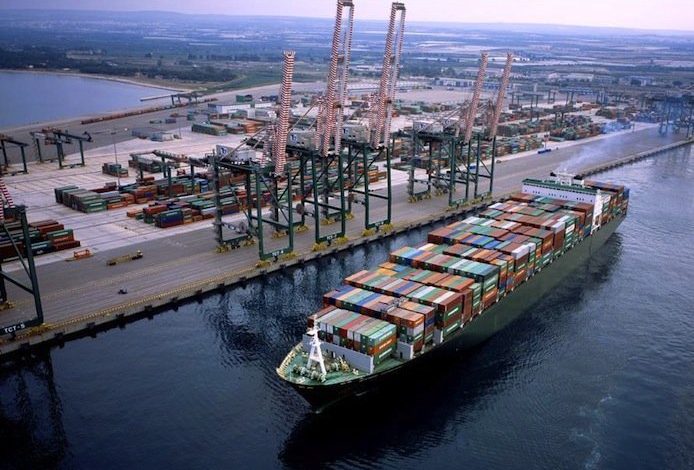A measured path to success in maritime digitalisation

Badrinath Setlur, assistant VP at digital consultants Cognizant, gives readers three strategies to a fully mature connected shipping system.
Digitalisation of the maritime industry is crucial in the era of heightening competition. Every competitive edge that shipping companies can gain must be leveraged in a timely manner, or they might face the risk of becoming obsolete.
The adoption of digital tools can extend and enhance shipping services by affording more direct, near-instant access to end customers, with negligible transaction costs that can be passed on to shippers as well as their customers.
With the 2016 global shipping crisis after the collapse of Hanjin Shipping, followed by 2017’s consolidations in the global shipping industry, the survivors from this disruption now enjoy greater economies of scale and increased demand. Digitalisation can ramp up shippers’ competitiveness by reducing the cost of moving goods and time wasted on administrative tasks.
However, the digitalisation journey can seem daunting, with buzzwords like Artificial Intelligence (AI) and distributed ledger technology being thrown around without much clarity. Maritime business leaders must balance digitalization’s inherent challenges with the need for speed, to avoid getting left behind by the competition. There are the three strategies that shippers can adopt to get a head start in their digital journeys.
#1 E-commerce as the gateway to connected shipping
Research from Cognizant reveals that customers worldwide are demanding more visibility into shipment details and service reliability. In recognition of this trend, most companies understand the significance of ‘connected shipping’, which includes end-to-end visibility across the value chain of ocean transport.
For example, a director of operations for a shipping line headquartered in Singapore said, “One critical aspect we are working on is to have backward integration with suppliers to manage the supply chain right from the point of order generation until the shipment is dispatched from the factory.”
However, many shipping companies are still proceeding cautiously. Of those surveyed by Cognizant, only 38% have e-commerce systems that are live or functional – while 62% are still in the implementation, research & development or even information gathering stages.
Shipping companies should strive to move their e-commerce systems into live or functional stages. SMAC Stack technologies – social, mobile, analytics and cloud – have already reached maturity and gained widespread adoption across various industries. The time is right to leverage e-commerce to take shipping to the next level and get a competitive advantage.
#2 A maturity framework to assess capabilities
Before getting started, businesses need an effective framework that can help assess the areas that need substantial investment of time and resources. This is especially important in the asset-intensive shipping industry that requires heavy expenditure to sustain its business practices.
Companies should consider analysing their digital readiness through a maturity framework that focuses on the five essential functions to a fully mature connected shipping system. They include:
- Capacity planning and forecasting
- Order management
- Shipping planning and scheduling
- Supply chain visibility
- Freight invoicing management and analytics
For each function, business leaders need to establish where their organisations lie across the maturity spectrum. Only then will it be possible to create a clear, simple strategy and roadmap for reaching the desired state. The spectrum runs across four stages:
- Defined – basic stage that mainly relies on manual processes
- Managed – rudimentary digitalisation that uses standalone software or templates, with no integration across functions
- Optimised – digitalised system that allows for forecasting and planning, as well as interactivity with data
- Transformed – fully mature system that can run automatically with minimal human intervention
At the moment, most companies are at the ‘Managed’ or ‘Optimised’ stages, which is good news. But it also shows the amount of work to be done in order for our shipping systems to become fully connected.
As companies build an automated e-commerce model, a strong framework can serve as a checkpoint at every stage to confirm that the necessary level of maturity has been reached, in order to optimize additional investments along the defined roadmap.
#3 Identifying and prioritising initiatives
At the same time, there is a need for shippers to identify and prioritise initiatives in the action plan for moving towards “Transformed” in the maturity framework. This is because digitalization requires significant investment, and such decisions are largely driven by ROI considerations. Companies should thus develop an ROI-based approach and establish measurable benchmarks to business KPIs.
Currently, it may still be challenging to justify e-commerce systems in terms of ROI, especially when considering competing priorities such as procuring assets including vessels, containers and other capital-intensive purchases.
Balancing these concerns is clearly an imperative. To work around the challenges of an ROI-based action plan, adopting a long-term view is essential, backed by a separate budget and performance measures in areas such as customer retention, operational efficiency, trade lane development and cost leadership. This will ensure that short-term priorities and current business challenges do not hinder longer term survival and growth in the digital era.
Getting shipping up to speed with the digital age
Shipping is the lifeblood of the global economy, delivering 85% of the global demand for transport. Managing the headwinds related to the digital economy is crucial for shippers to continue staying competitive, especially with the global shipping environment becoming increasingly unpredictable, with rising competition, declining profit margins and exponentially growing demands for expected service levels.
The three strategies will help shipping organisations successfully move toward the ideal of connected shipping, in order to grow revenue, improve margins and achieve profitable growth.
